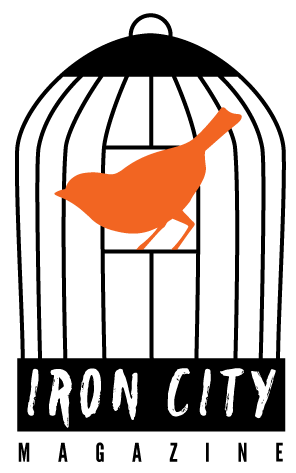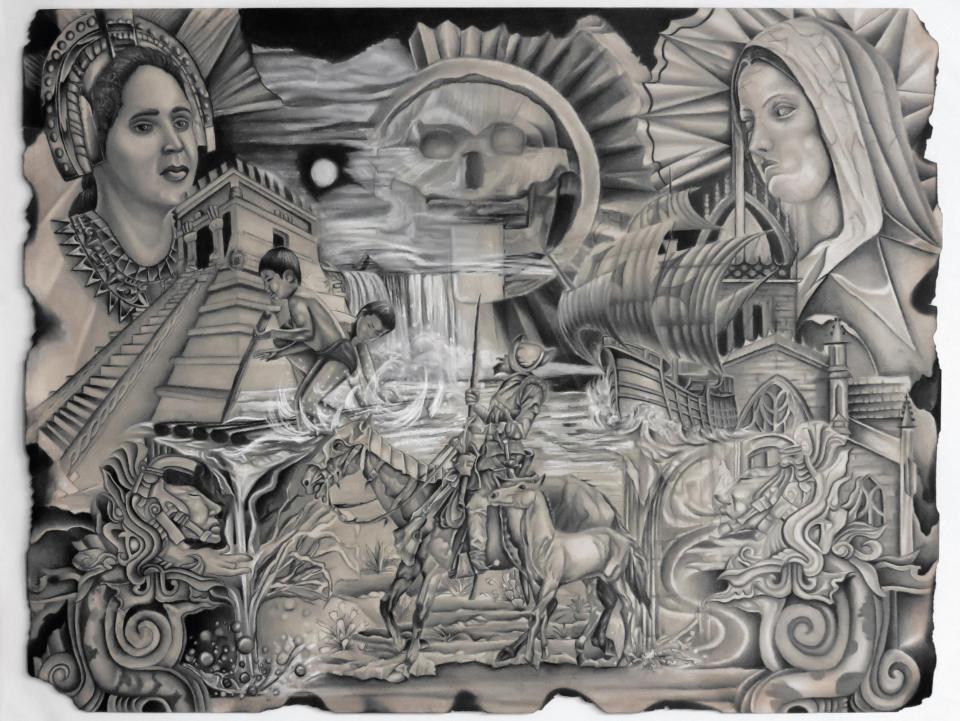Constructing 'Iron City'
That Cornelia “Corri” Wells has a passion for education isn’t surprising, but not everyone knows that her passion has led to prison—teaching in prison that is. Now Iron City Magazine, a publication that features the work of and about those incarcerated, has seen its inaugural issue and Wells couldn’t be more proud of the work and dedication of those involved.
Serendipity is the only word that describes the confluence that led Wells to ASU English’s Prison Education Programming (PEP). Her love of creative writing was obvious through the 67 hours in post-doctoral classes in creative writing and Spanish she pursued, but she needed to find a way “to engage with people outside the walls of academe. . . . I wanted the world to be my campus, not the campus my world.”
However, it wasn’t until the ASU Composition Conference during the 2011 spring semester that she connected with Sherry Rankins-Robinson and Joe Lockard and their work to create a link between ASU and the prison system. The introduction brought Wells into the Pen Project internship, working with ten students who provided feedback on the writing sent to them from a New Mexico maximum-security prison. She then became the advisor for the Prison Education Awareness Club (PEAC) and began overseeing the annual Prison Education Conference at ASU.
Through these experiences, Wells learned more about the prison system, the lack of education, and the significant barriers that released or paroled prisoners face. The education dearth became Wells’s primary concern; she learned that recidivism is as high as 67% and that many education programs for inmates reduce that rate to less than 4%. Knowing that education means opportunities to better inmates’ lives and escape the cycle of crime and returning to prison, Wells wanted to do more, which led to her work in the current program. Out of these combined programs came Iron City Magazine.
In spring 2016 alone, the three prisons in Arizona and New Mexico participating in the Pen Project generated 134 works in a variety of genres. “[I]t just seemed silly to have all this talent and insight and not share it,” observes Wells. “One writer in Santa Fe, who started with the Pen Project in 2010, its first year, received a creative writing scholarship to the Institute of American Indian Arts on his release two years ago. I wanted to honor the writers in our program, both incarcerated and released.”
In addition to writing on any topic by inmates and former inmates, Iron City also accepts prison-related pieces from family and faculty. For Wells, the magazine is also about building bridges and awareness between those who have experienced prison life and those who have not. She has always seen her role as a teacher and as a writer as dispelling stereotypes and prompting inquiry about why these views are held. Wells notes that language is a social construct and that “…writing is also sharing and being heard. To read is to give voice to another, to invite them into our internal dwelling. I wanted to give men and women behind bars this intimate social space within others.”
Setting up the magazine was not without its challenges. The body of works that the participants produced often required transcription, since prisoners seldom have access to computers to type out their works. The issue of establishing the non-profit status of the magazine and building it from the ground up was an eye-opening experience as well. Wells worked with Barrett, The Honors College student Natalie “Nat” Volin on the project, who became Managing Editor as part of her honors thesis.
With Wells as Editor-in-Chief, the pair worked together to create the title for the magazine, get domain rights, fill out the legal forms for the non-profit, and find financial funding to get the project on its feet. Volin secured funding for their inaugural issue through an ASU student grant, The Woodside Community Action Grant, while other funding came from Barrett and PEAC. Along the way, Volin changed her major to graphic design, bringing even more resources to bear on the project. She also had the opportunity to work with Iron City’s Art Editor, David G. Wells. David (Corri's husband) is a former Art Director for NBC Nightly News in New York, and he mentored Volin through the process.
Corri Wells says that the enthusiasm of the magazine staff was amazing and she was so honored to work with these talented and dedicated people. Recent ASU graduates Jackie Balderrama (MFA 2016), Poetry Editor, and Gary Garrison (MFA 2016), Fiction Editor, who both worked with Hayden’s Ferry Review and had taught at the Florence State Prison in Arizona, brought their experience and insight to the project. Recent ASU graduate and PEAC President Jessica M. Fletcher (BA 2016) also served as a Fiction Editor and was a former Pen Project Intern teaching psychology at the Florence Prison. Writing Programs Instructor Shavawn Berry served as Creative Nonfiction Editor, and also taught in the Pen Project Internship. The combined experience of the team made the first issue one they were all proud to have published. Even though Volin, Balderrama, Garrison, and Berry have moved out of state, they all remain dedicated to continuing the work on Iron City Magazine.
The experience with the magazine and the various internships and programs has emphasized to Wells that there is still so much more to be done to educate prisoners and provide them with the tools to succeed and change their lives, and the lives of everyone in their communities, upon their release. The magazine continues to grow and Wells hopes for an expansion of submissions from across the country to maintain and increase the literary presence and voice of these men and women. When it comes down to it, Wells sees this as fulfilling a passion: “Don’t wait for some magical perfect moment when you think you won’t make any mistakes. Mistakes are just lessons. And now is when things happen.”
Image 1: Masthead for Iron City Magazine. Art design by Nat Volin.
Image 2: Back cover art for the first issue of Iron City Magazine: "Dawn of Conquest" by Hector Cedillos, a former inmate now studying art at ASU. Charcoal on paper (2014).


